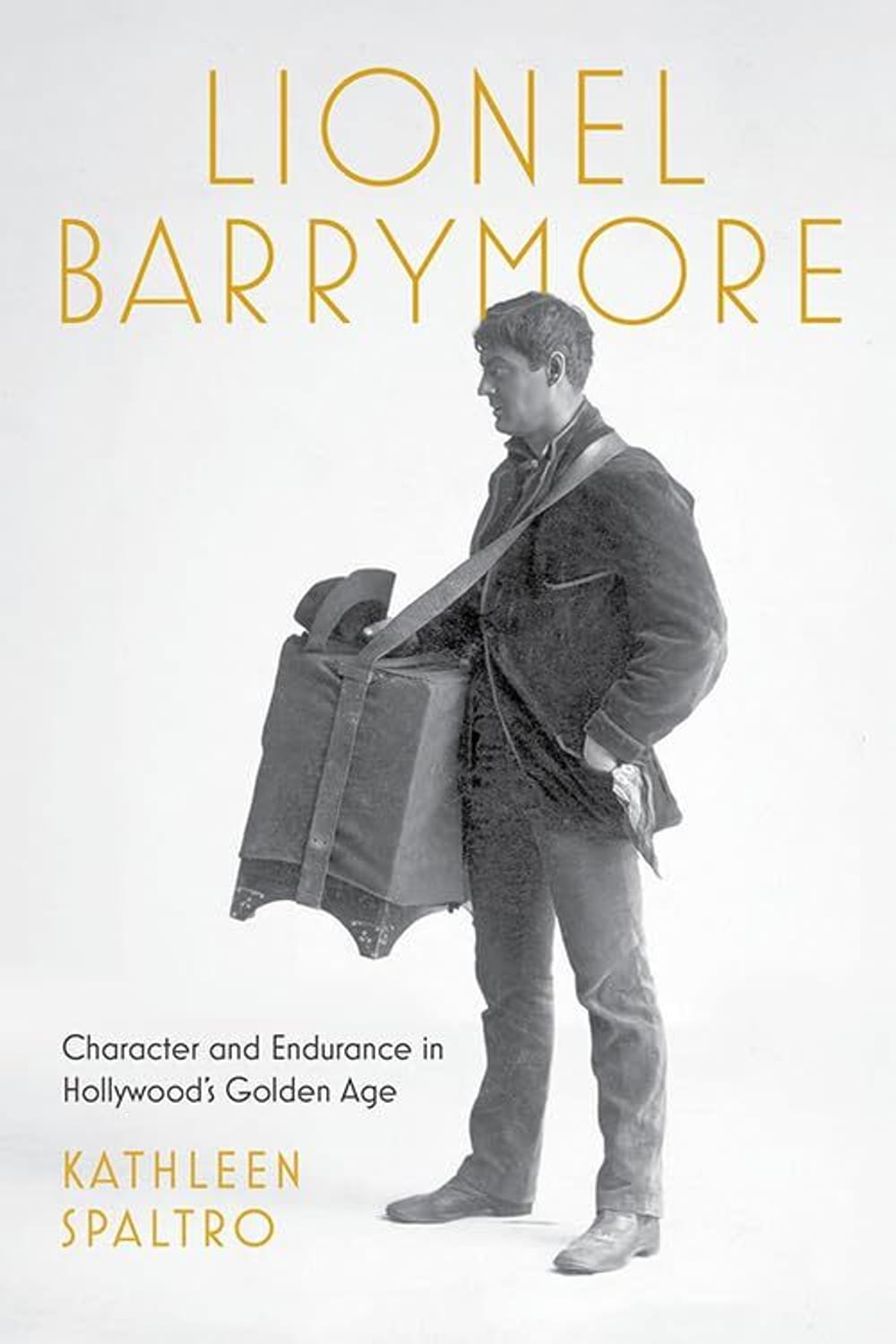The man behind Mr. Potter, Dr. Gillespie, and Scrooge
Discussing Philadelphia’s Hollywood legend Lionel Barrymore with biographer Kathleen Spaltro

One of Lionel Barrymore's last and most love-to-hate roles would be as Mr. Potter in Frank Capra’s It’s A Wonderful Life, but his talents would extend to much more than acting as Kathleen Spaltro's new book on the character actor attests. Like most of his family, Lionel Barrymore (older brother of John and Ethel and great-uncle of Drew) would have the most success as an actor, winning an Oscar in 1931 for A Free Soul. Had Lionel had his way, however, acting would’ve never been his chosen profession, much preferring painting and music over being on stage. Having previously written a book on actress Mary Astor, Kathleen Spralto's latest, Lionel Barrymore: Character and Endurance in Hollywood’s Golden Age, takes a look at the Philadelphia-born talent.
Rachel Bellwoar: One of my earliest movie memories is watching Key Largo, in which Lionel Barrymore has a supporting role. Do you remember the first film you saw him in, or is there a film of his that you wish more people would seek out?
Kathleen Spaltro: I think people would enjoy Lionel’s less-famous films from the 30s. These would include Arsène Lupin, Broken Lullaby/The Man I Killed, Looking Forward, Sweepings, One Man’s Journey, Night Flight, Ah, Wilderness!, The Voice of Bugle Ann, The Devil-Doll, and The Road to Glory. I have special affection for Public Hero No. 1, highly praised by Graham Greene, then a film critic, who also commented that Lionel “bled gin.”
Bellwoar: As you talk about in your introduction, if Lionel Barrymore is arguably the most well-known of the Barrymore siblings today, that hasn’t been reflected in the books written about the family. Do you think that recognition can partly be attributed to his preference for film over stage work, which can still be viewed today?
Spaltro: All three Barrymore siblings acted in both silent and sound films, but Jack’s career ended prematurely with his early death, and Ethel began making movies in earnest only after illness and age motivated her to leave the stage for good. So Lionel’s career in films was the most sustained of the three. Therefore, his more substantial record of achievement in film acting exposed him not only to audiences during his lifetime but to later film enthusiasts. In addition, It’s a Wonderful Life and Key Largo hold special appeal.
Bellwoar: For someone who was so gifted at acting, what becomes clear fast is how much he (and his siblings) wanted to avoid the family business. Before writing this book, were you aware of Lionel’s other creative (and more personally fulfilling) pursuits, including directing, painting, composing music, and creating etchings?
Spaltro: Before researching this biography, I was far from fully aware of the full scope of Lionel’s artistic endeavors and pursuits.
Bellwoar: Money problems would ultimately be what pushed him into acting. If it weren’t for his last name, though (which was already big in the theater thanks to people like his parents), would Lionel have been given as many chances and paid opportunities to grow into the great actor he would become?
Spaltro: Given that Lionel felt that the longstanding Drew Theatre legacy and the more recent Barrymore fame begun by his father trapped him into stage acting, it seems as if he felt surrounded by unwanted opportunities. Given his reluctance to act in the theater, without these pressures, he would probably have found some other way to make a living.
Bellwoar: Lionel was born in Philadelphia, but it doesn’t sound like he stayed in one place long as a kid. Did he ever voice an opinion on the city?
Spaltro: From his memoirs and interviews, I have the sense that his memories of Philadelphia centered almost entirely on the Tomb of the Capulets and the Arch Street Theatre and were bound up with Mum Mum [Louisa Lane Drew].
Bellwoar: One of the neat finds in this book is a painting by Ernest Blumenschein of Lionel, his first wife Doris, and his daughter Ethel (who tragically didn't live long past childbirth). The photo of the painting is credited to the Pennsylvania Academy of the Fine Arts. Can it actually be viewed there, and how did you come to learn of the painting’s existence?
Spaltro: PAFA exhibited the painting not long after Blumenschein created it in Paris and returned to America to live. The original photo is of the painting on exhibit. Although I searched long and hard, I was not able to find out if the painting still exists. If Lionel owned it, a fire in his home after his death may have destroyed it.
Bellwoar: Growing up, I always thought Lionel’s loss of mobility and later use of a wheelchair was due to something hereditary, but it was due to him breaking his hip twice. Are there any other examples of Golden Age actors who used a wheelchair?
Spaltro: I am not aware of any. It was unusual enough that Lionel feared losing his film acting career because of stigma.
Bellwoar: Lionel would make most of his films for MGM. Do you think his career would’ve been different or as long-lasting if he had joined a different studio?
Spaltro: Working for MGM, under the protection of Louis B. Mayer, was good for Lionel. By his account, Mayer kept Lionel from being fired because of his disability and found acting opportunities (as Dr. Gillespie) that reassured MGM powers that be that the audience would accept Lionel’s acting from a wheelchair.
Bellwoar: You also have a biography in the works on Ethel Barrymore. Was that always the plan, or did researching Lionel dig up a lot of fresh information?
Spaltro: Terry Chester Shulman is completing a new biography of Jack for the University Press of Kentucky. As we supported each other, the idea of a third biography for the press, that of Ethel, developed, and Terry encouraged me to take it on.
At top: The new book from Kathleen Spaltro chronicles one of Philadelphia’s earliest film stars. (Image courtesy of Lexington: University Press of Kentucky.)
What, When, Where
Lionel Barrymore: Character and Endurance in Hollywood’s Golden Age. By Kathleen Spaltro. Lexington: University Press of Kentucky, 2024. 256 pages, hardcover; $40. Get it here.
Sign up for our newsletter
All of the week's new articles, all in one place. Sign up for the free weekly BSR newsletters, and don't miss a conversation.

 Rachel Bellwoar
Rachel Bellwoar